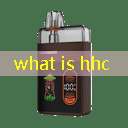Puffs Vape: Understanding the Phenomenon and Its Impact on Modern Society
Introduction
In recent years, vaping has emerged as one of the most significant trends in respiratory habits, particularly among the younger generation. The term “puffs vape” encapsulates not only the action of inhaling vapor from electronic cigarettes but also signifies a cultural shift in tobacco consumption. As traditional smoking declines, vaping presents itself as an alternative, purportedly less harmful, method of nicotine delivery. However, the introduction of vaping also raises important questions regarding health implications, regulatory challenges, and societal norms. This article delves into the complexities surrounding “puffs vape,” exploring its history, health effects, the regulatory landscape, and its cultural significance.
History of Vaping
The origins of vaping can be traced back to the early 21st century, when Hon Lik, a Chinese pharmacist, developed the first commercial e-cigarette in 2003. This innovation aimed to provide smokers with a less harmful alternative to traditional cigarettes. Within a few years, the market for e-cigarettes expanded globally, influenced by advancing technology, marketing strategies, and the growing awareness of the health risks associated with traditional smoking.
Through the years, various brands have emerged, each offering unique flavors and nicotine levels, allowing users to customize their vaping experience. This accessibility and variety have contributed to its popularity, particularly among adolescents and young adults.
The Mechanics of Vaping
Understanding how vaping works is crucial for grasping its implications. E-cigarettes function by heating a liquid (commonly referred to as e-liquid or vape juice) that typically contains nicotine, flavorings, and other chemicals. This process produces an aerosol, which users inhale, often described as “vaping.” Unlike traditional cigarettes, e-cigarettes do not involve combustion, and thus, proponents argue they eliminate many harmful byproducts found in conventional tobacco smoke.
However, the vapor from e-cigarettes is not devoid of harmful substances. Research has demonstrated that the aerosol can contain heavy metals, volatile organic compounds, and other toxicants that may pose health risks. A thorough examination of these components reveals the complexities in assessing the safety of vaping compared to conventional smoking.
Health Implications of Vaping
While e-cigarettes are often marketed as “safer” alternatives to smoking, numerous studies suggest otherwise. The health implications of vaping are multifaceted and still under extensive research. A significant concern is the addictive nature of nicotine, which remains prevalent in most e-liquids. Here, we summarize some of the health issues associated with vaping:
1. Nicotine Addiction: Young users may develop dependency more rapidly due to higher nicotine concentrations in e-liquids, leading to potential long-term addiction.
2. Respiratory Issues: Studies indicate that users may experience respiratory problems, including coughing, wheezing, and shortness of breath, as vapor exposure can irritate lung tissue.
3. Cardiovascular Risks: Emerging research suggests that vaping may increase heart rate and blood pressure, potentially leading to cardiovascular complications over time.
4. Popcorn Lung: Some flavored e-liquids contain diacetyl, a chemical linked to a severe lung condition called popcorn lung, characterized by scarring of the lungs.
The table below summarizes various health risks associated with vaping compared to traditional smoking:
| Health Risk | Traditional Smoking | Vaping |
|---|---|---|
| Nicotine Addiction | High | Moderate to High |
| Respiratory Issues | Severe | Moderate |
| Cardiovascular Risks | High | Emerging Evidence |
| Popcorn Lung | No | Potential Risk |
This illustrates that while vaping may present fewer risks in certain areas, it is not without its danger.
Regulatory Landscape and Challenges
The rapid adoption of vaping has often outpaced regulatory measures aimed at safeguarding public health. Governments worldwide grapple with how to classify and regulate e-cigarettes. Some regions have implemented strict age restrictions and marketing regulations, while others have outright bans on flavored vaping products, citing concerns over youth attraction.
The regulatory challenge is compounded by the vaping industry’s ability to market itself as a safer alternative to smoking, effectively leading to a public perception that may not align with scientific evidence. Key organizations, including the World Health Organization (WHO) and the Centers for Disease Control and Prevention (CDC), have raised alarms about the potential long-term consequences of vaping.
Culture and Social Acceptance
Vaping has transcended its original purpose as a smoking cessation tool to become ingrained in modern culture, particularly among younger individuals. The use of flavored e-liquids, often reminiscent of candy or desserts, contributes to its appeal. Social media platforms have further amplified this trend, with influencers promoting vaping as a lifestyle choice.
Despite the controversies surrounding vaping, it has sparked a new subculture characterized by camaraderie among vapers, as well as a distinct set of social norms. Community events such as vape expos and competitions have emerged, reinforcing its status as a legitimate hobby rather than merely a smoking alternative.
Case Studies in Vaping Trends
To understand the dynamics of vaping, let’s examine two case studies that illustrate diverse trends in vaping behavior among adolescents.
Case Study 1: The Rise of Flavored Vapes
In the United States, the introduction of flavored e-liquids has played a pivotal role in increasing youth vaping rates. A study conducted by the National Institute on Drug Abuse revealed that nearly 80% of adolescent vapers cited flavors as a primary reason for their use. This case emphasizes the crucial link between flavor accessibility and youth uptake of vaping.
Case Study 2: Regulation in the UK
In contrast, the United Kingdom has taken a different regulatory approach. The UK mandates stringent controls on e-liquid compositions and marketing. This has led to a different public perception of vaping, with government officials promoting it as a less harmful alternative to smoking while focusing on harm reduction strategies. As a result, the prevalence of smoking among adults has decreased significantly.
Frequently Asked Questions about Vaping

What is the difference between vaping and smoking?
Vaping involves inhaling an aerosol produced by heating e-liquids, while smoking involves the combustion of tobacco. Vaping is often marketed as a safer alternative, though it still carries health risks associated with nicotine and other chemicals.
Is vaping safe for non-smokers?
While vaping may be less harmful than smoking traditional cigarettes, it is not considered safe for non-smokers, especially teenagers and young adults, due to the addictive nature of nicotine and potential health risks.
How can young people be prevented from vaping?
Preventive measures include stricter regulations on flavored e-liquids, educational campaigns about the risks of vaping, and engaging parents and educators in discussions about the dangers associated with e-cigarette use.







